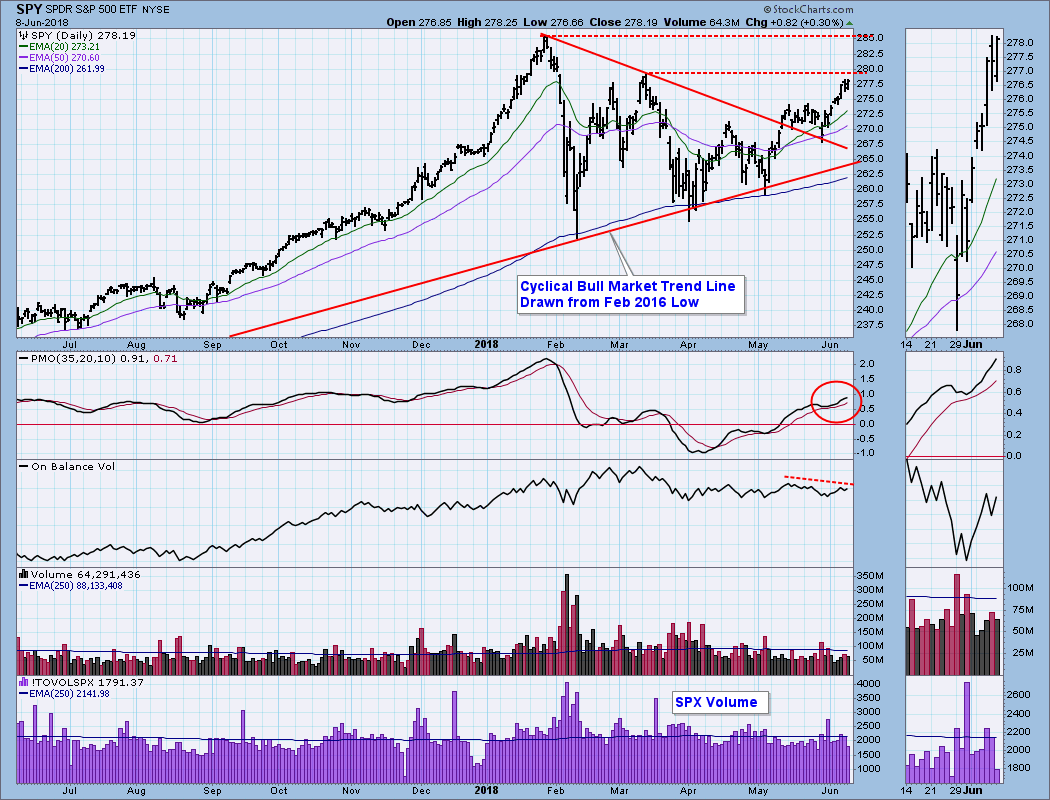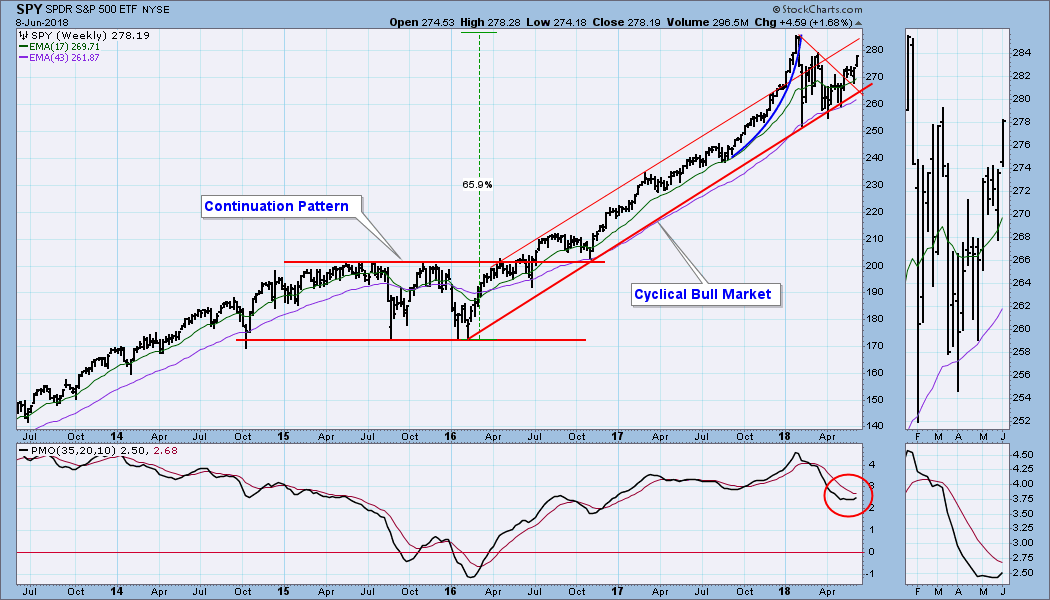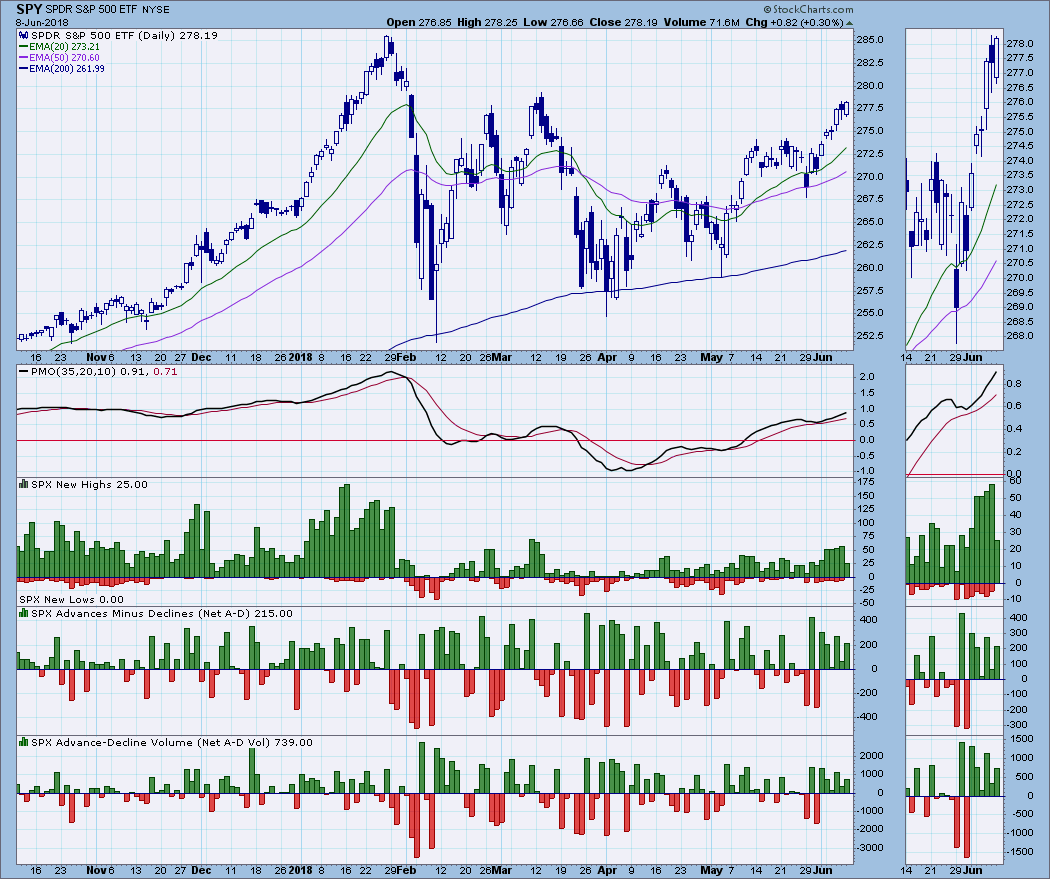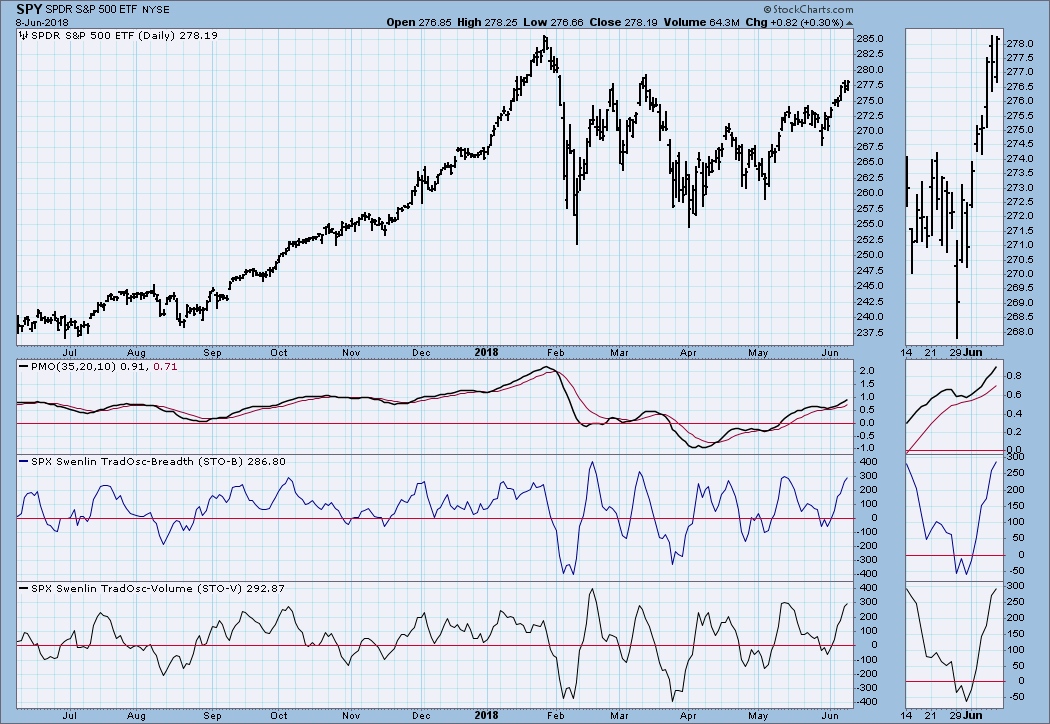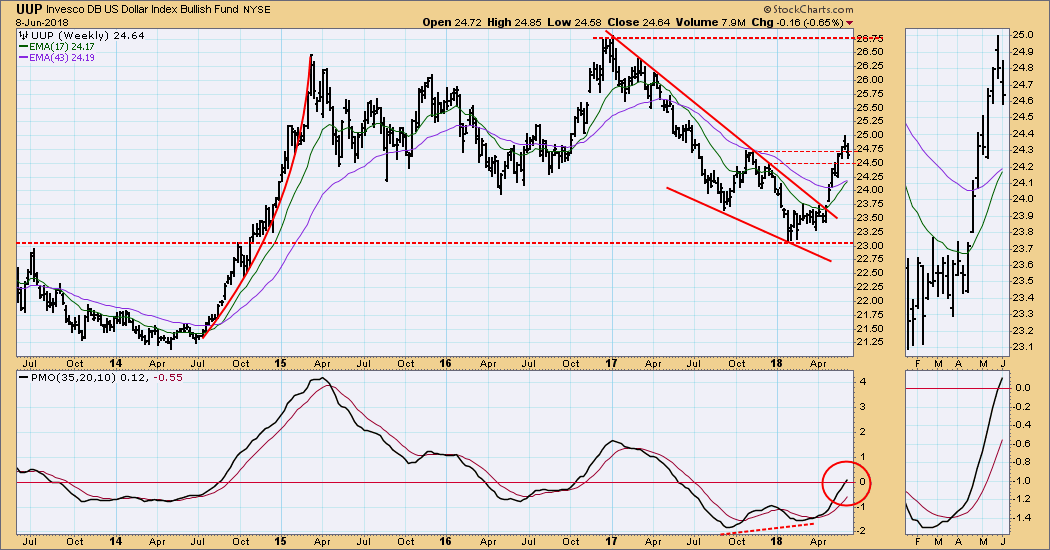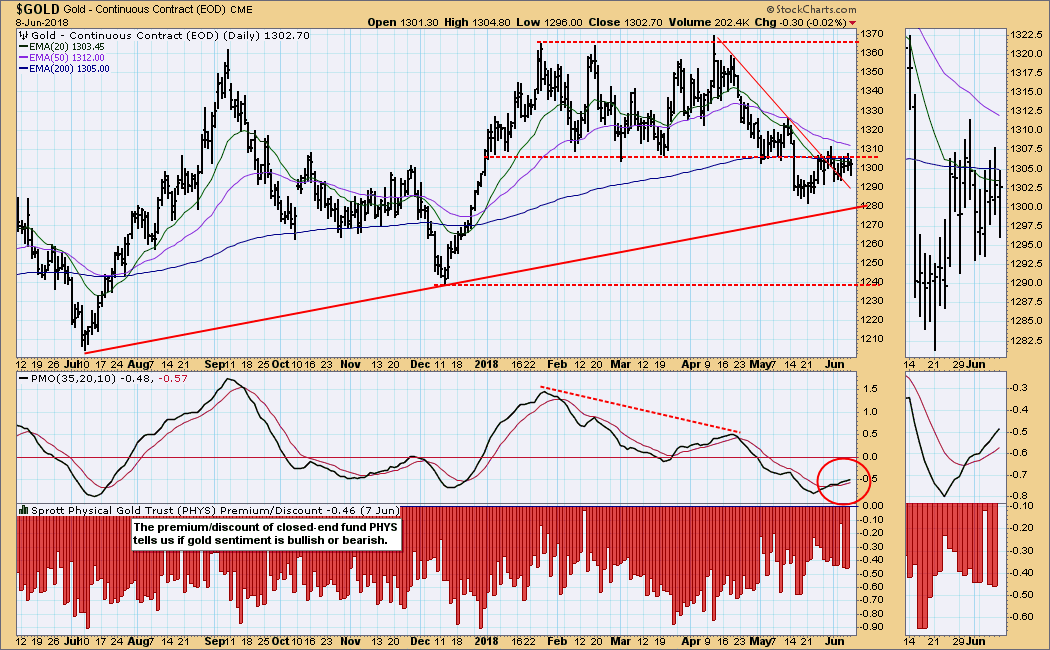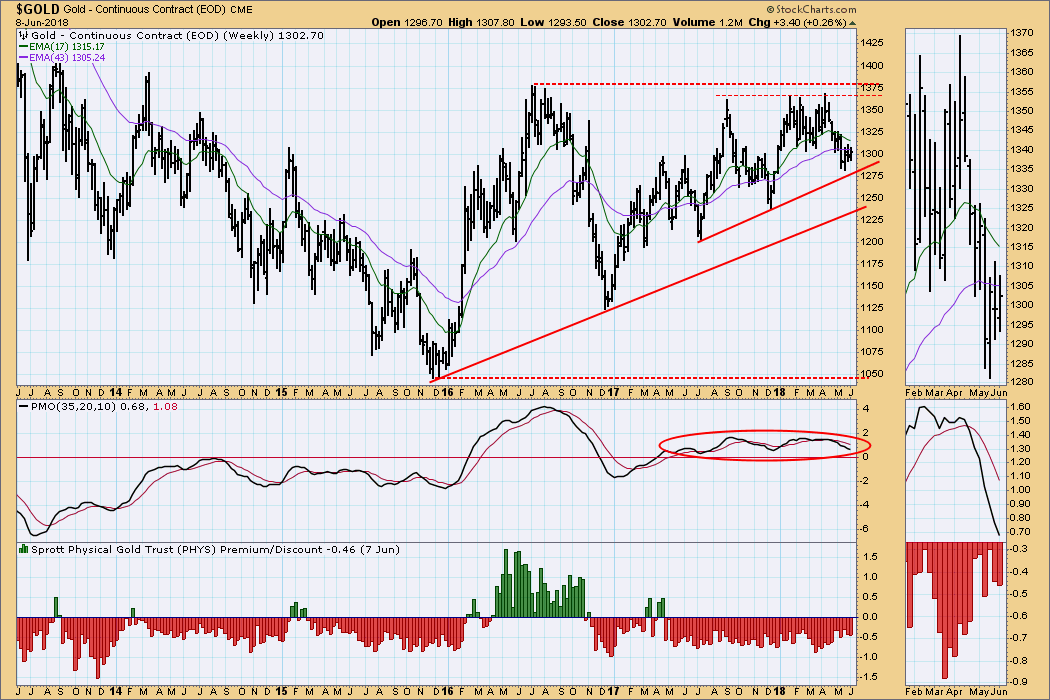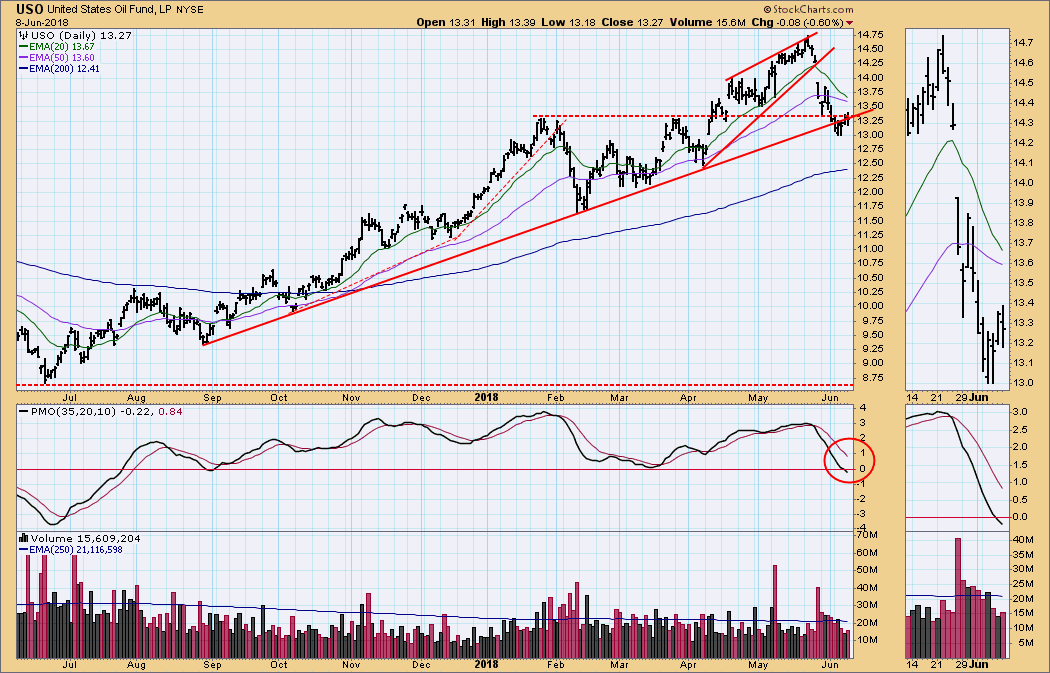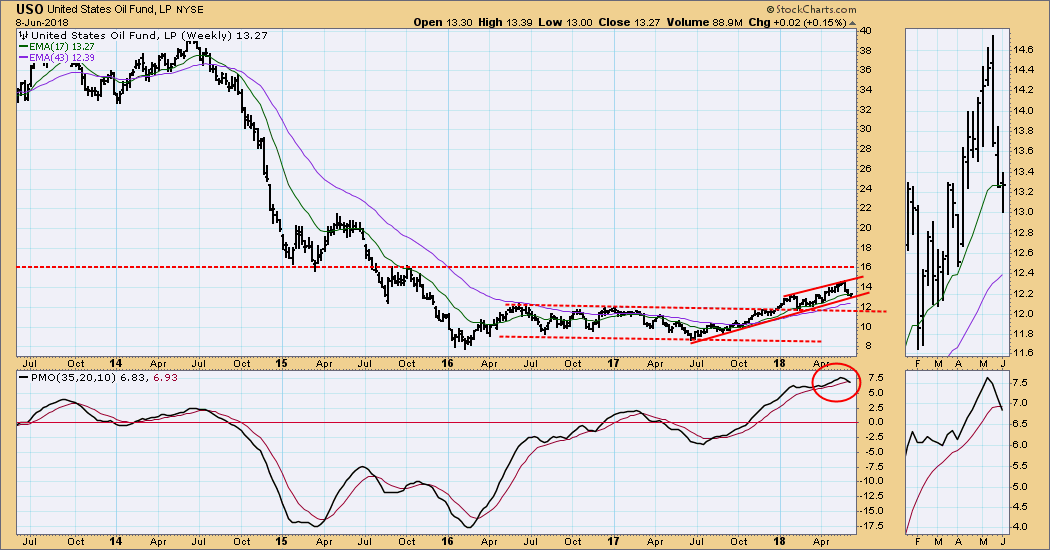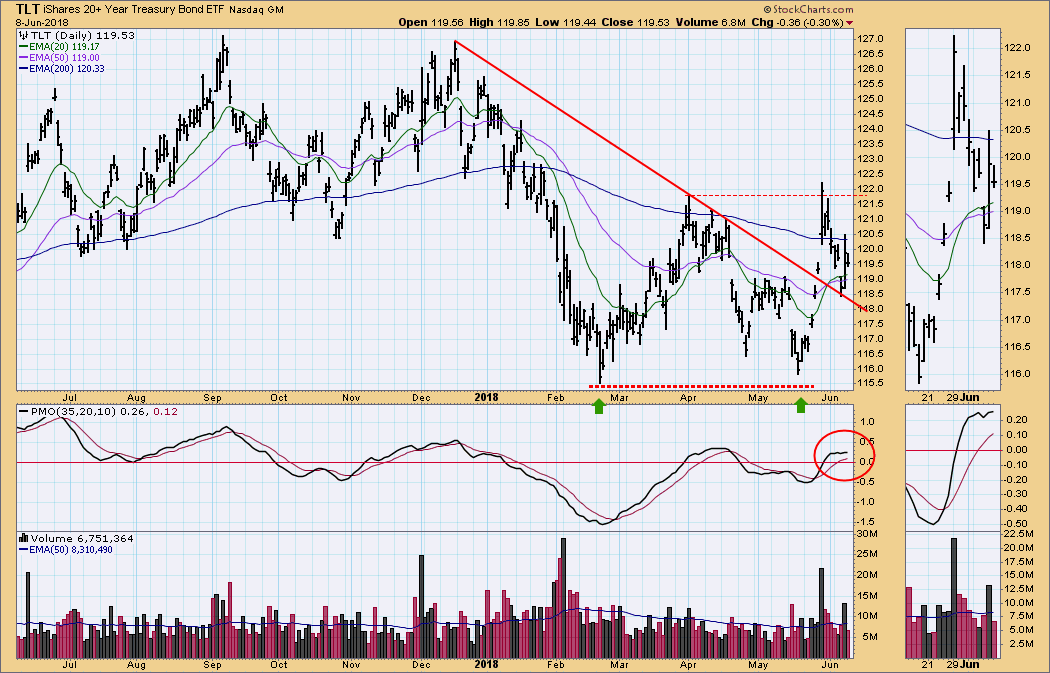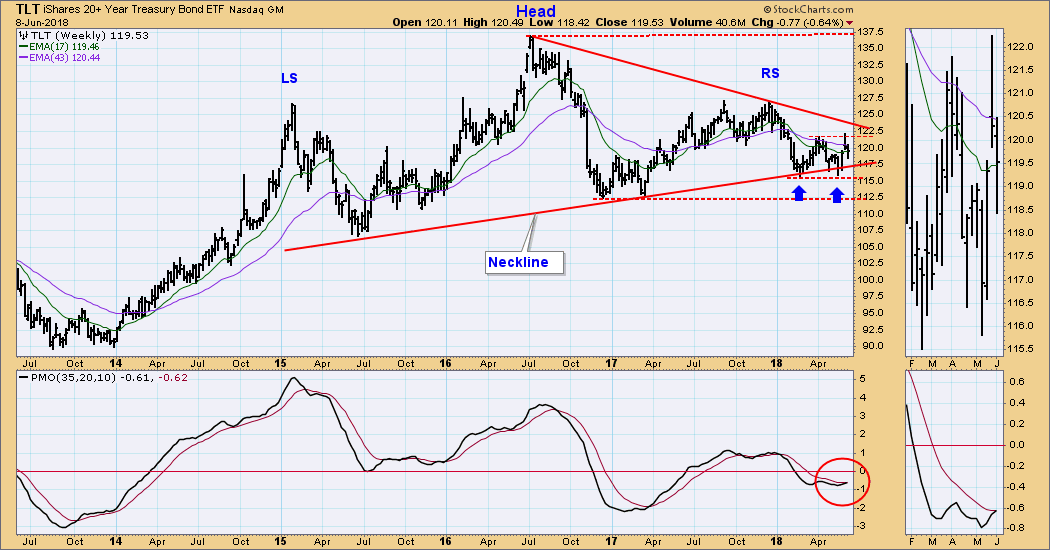
Rising wedge formations normally resolve downward, but sometimes they don't. While I was expecting the normal bearish resolution of the current rising wedge, the market wasn't having it, and it pressed higher for a breakout on Wednesday. There has been no follow through yet, but price has managed to hold above the top of the wedge. There are significant lines of resistance just ahead, and OBV is not confirming the new price highs.
The DecisionPoint Weekly Wrap presents an end-of-week assessment of the trend and condition of the stock market (S&P 500), the U.S. Dollar, Gold, Crude Oil, and Bonds.
SECTORS
Each S&P 500 Index component stock is assigned to one, and only one, of 10 major sectors. This is a snapshot of the Intermediate-Term and Long-Term Trend Model signal status for those sectors.
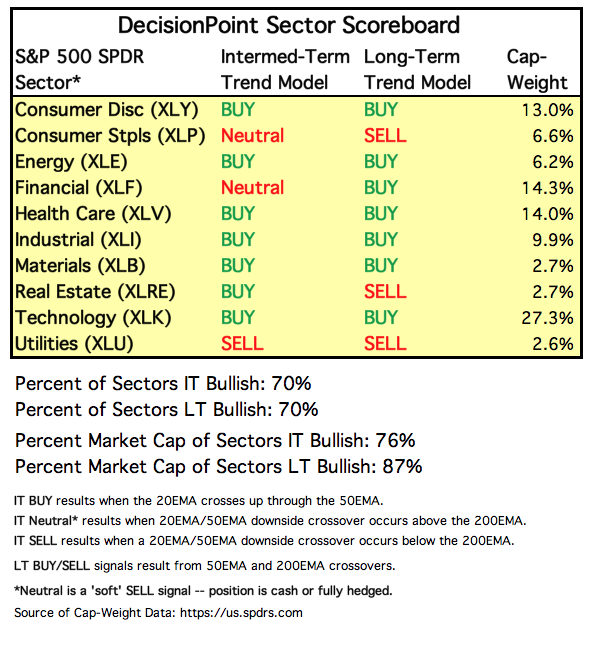
STOCKS
IT Trend Model: BUY as of 5/11/2018
LT Trend Model: BUY as of 4/1/2016
SPY Daily Chart: This week SPY volume relative to the 250EMA of volume was a bit weak, but SPX volume was quite robust until Friday when it faded. The OBV negative divergence for SPY undermines price gains, but we need to remember that OBV based upon SPX volume may be different from SPY OBV. I checked it, and, while not as pronounced, a negative divergence exists there as well.
SPY Weekly Chart: It is hard to find something not to like about this chart. The weekly PMO has finally turned up, and price still has room to advance within the cyclical bull market rising trend channel.
Ultra-Short-Term Market Indicators: As the market closed at its highest for the week, there was a sharp contraction of New Highs on Friday.
Short-Term Market Indicators: The STO-B (breadth) and STO-V (volume) are solidly overbought at this point, and based upon performance this year, I think we'll see some price weakness when these indicators top.
Intermediate-Term Market Indicators: These indicators are getting somewhat overbought, but they're still well below the top of the normal range.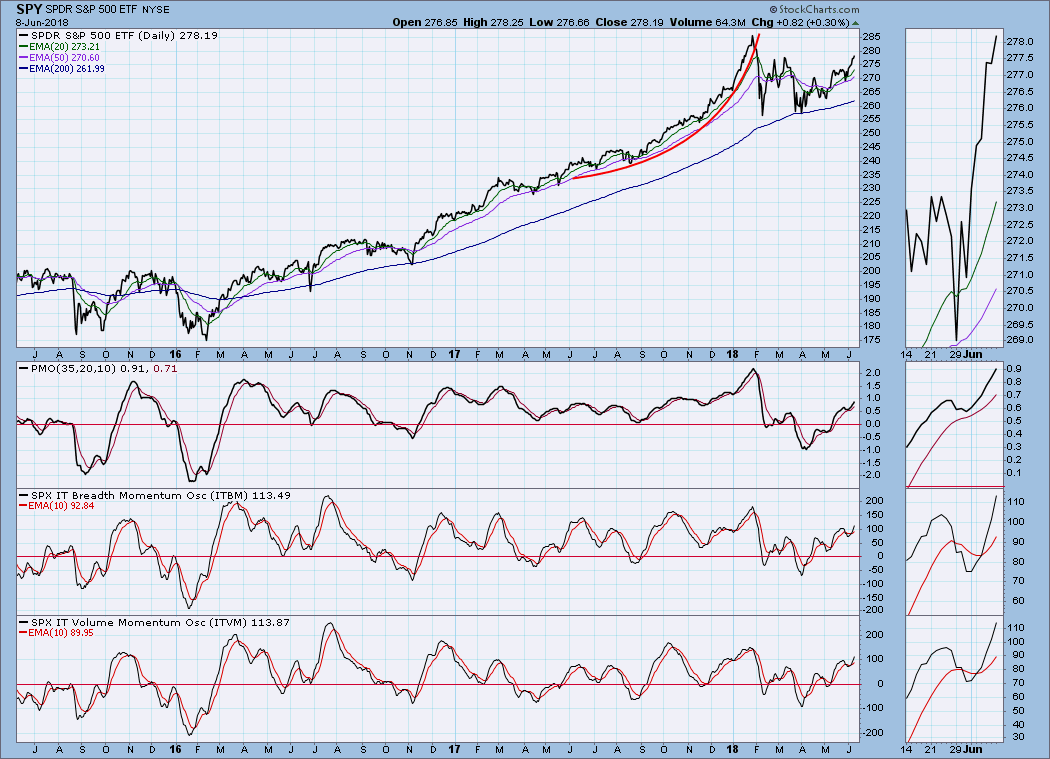
Conclusion: Overbought short-term indicators, the nearness of overhead resistance, and the OBV negative divergence all have me looking for a pullback. Be that as it may, thanks to the strong tech sector, many market indexes (Nasdaq 100, Russell 2000, S&P 600 Small Cap, Nasdaq Composite) are making all-time highs. Because of that I am not looking for anything too impressive to the downside.
DOLLAR (UUP)
IT Trend Model: BUY as of 4/24/2018
LT Trend Model: BUY as of 5/25/2018
UUP Daily Chart: In April UUP broke out of a falling wedge formation, and subsequently both the IT and LT Trend Models became bullish. Currently, UUP is pulling back for the second time since the breakout. The daily PMO has topped and crossed down through the signal line, so this pullback could become more serious.
UUP Weekly Chart: The weekly PMO and price trend look very healthy, and the 17EMA is about the cross up through the 43EMA.
GOLD
IT Trend Model: NEUTRAL as of 5/2/2018
LT Trend Model: BUY as of 4/12/2017
GOLD Daily Chart: Recent short-term trends are positive, but gold seems stuck below horizontal resistance.
GOLD Weekly Chart: The weekly PMO is falling, but it remains within its one-year range. The chart is positive, but trends are negative. All-in-all it is hard to get excited about gold at this time.
CRUDE OIL (USO)
IT Trend Model: BUY as of 9/6/2017
LT Trend Model: BUY as of 11/2/2017
USO Daily Chart: USO is struggling to stay above rising trend line support, and horizontal support has failed. The 20EMA and 50EMA are converging, and a downside crossover would result in the IT Trend Model changing from BUY to NEUTRAL.
USO Weekly Chart: With the weekly PMO having crossed down through the signal line, this longer-term chart is not reassuring.
BONDS (TLT)
IT Trend Model: BUY as of 6/1/2018
LT Trend Model: SELL as of 2/8/2018
TLT Daily Chart: TLT has completed a 50% retracement from the May price top, and coincidentally it has found support on the declining tops line. The PMO is slightly above neutral, so there is plenty of room for more upside.
TLT Weekly Chart: There is a bullish double bottom embedded in the longer-term bearish head and shoulders pattern. Both the PMO double bottom and the PMO move above the signal line favor an upside resolution of the double bottom in price. That in turn would threaten the viability of the head and shoulders.
**Don't miss any of the DecisionPoint commentaries! Go to the "Notify Me" box toward the end of this blog page to be notified as soon as they are published.**
Technical Analysis is a windsock, not a crystal ball.
Happy Charting!
- Carl
NOTE: The signal status reported herein is based upon mechanical trading model signals, specifically, the DecisionPoint Trend Model. They define the implied bias of the price index based upon moving average relationships, but they do not necessarily call for a specific action. They are information flags that should prompt chart review. Further, they do not call for continuous buying or selling during the life of the signal. For example, a BUY signal will probably (but not necessarily) return the best results if action is taken soon after the signal is generated. Additional opportunities for buying may be found as price zigzags higher, but the trader must look for optimum entry points. Conversely, exit points to preserve gains (or minimize losses) may be evident before the model mechanically closes the signal.
Helpful DecisionPoint Links:
DecisionPoint Shared ChartList and DecisionPoint Chart Gallery
Price Momentum Oscillator (PMO)
Swenlin Trading Oscillators (STO-B and STO-V)


